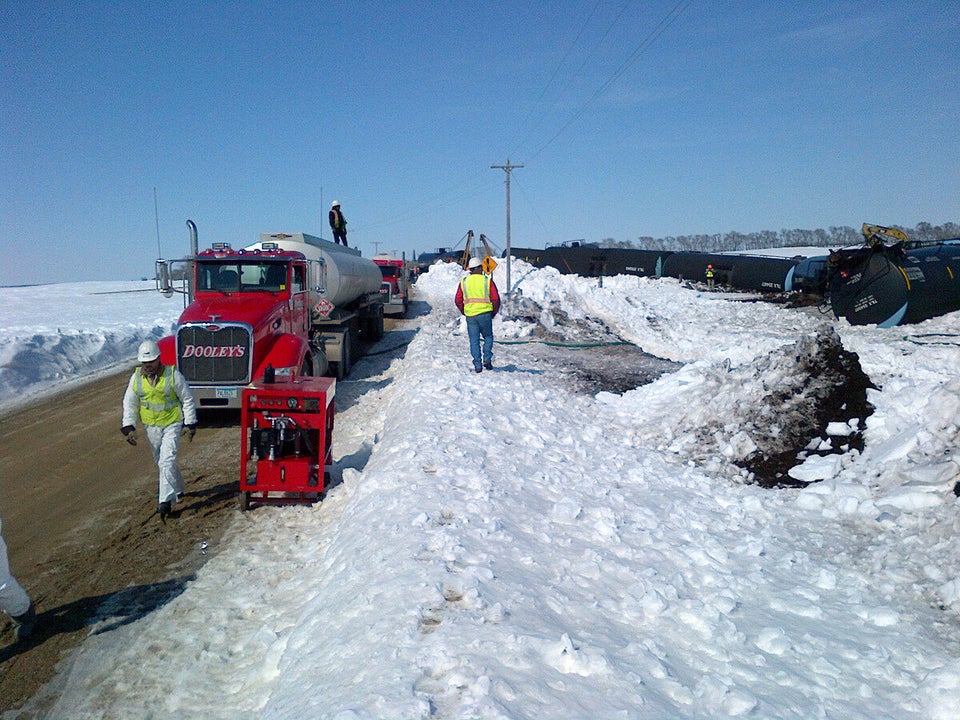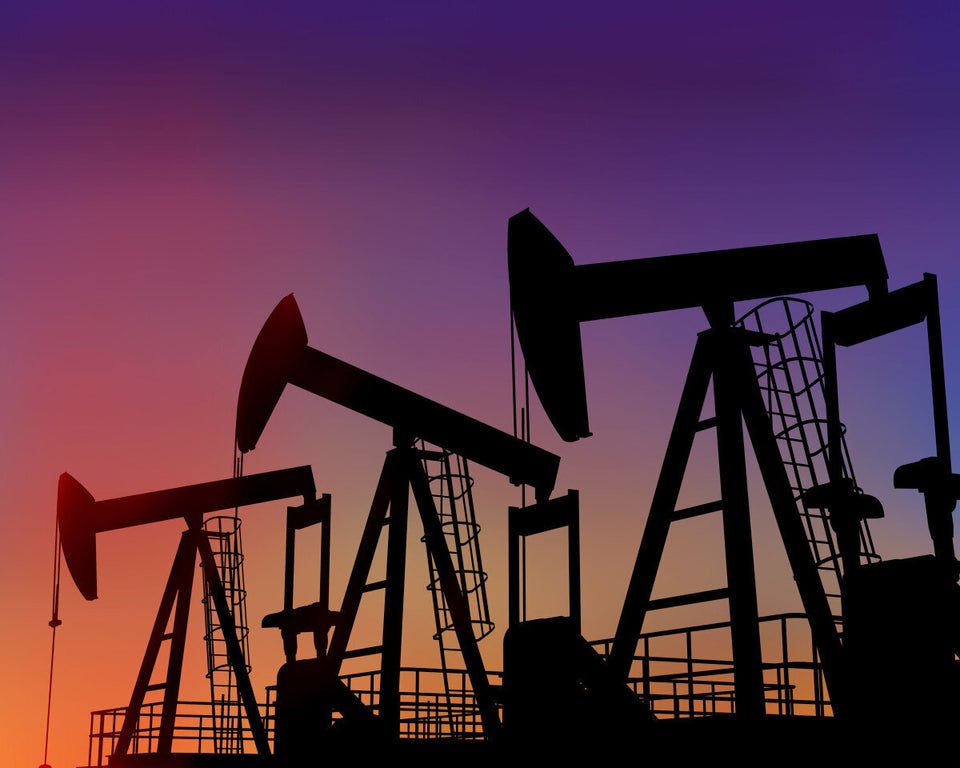As debate grows over the safety of transporting oil over rail, a train hauling the commodity derailed within the Lloydminster city limits on Friday.
Lloydminster RCMP say although diesel fuel spilled as a result of the derailment, which took place north of 52 Street at 40 Avenue, none of the derailed tanker cars leaked as a result of the incident.
"On arrival, a locomotive engine and eight tank cars had derailed and were lying on their side," said Lloyminster RCMP Cpl. Mike Dunsmore.
"Local traffic was disrupted during the clean up operation and there was no requirement for any residential evacuation."
Story continues after slideshow
CP Rail police will continue the investigation into the derailment, Mounties said.
The Alberta incident occurred as questions arise about whether rail lines are a safe mode of trans-continental oil transportation. Three weeks ago, a train derailment in Lac-Megantic, Que. ended in a gigantic explosion and fireball in the centre of town.
The train was made up of 72 tanker cars transporting crude. The number of people killed in the incident is, at this moment, as high as 47.
Two weeks before that incident, another train pulling tanker cars through the middle of southeast Calgary derailed while crossing a bridge over the Bow River, as the southern half of Alberta battled to reclaim towns and neighbourhoods ravaged by the June flood.
Authorities managed to keep the cars from plunging into the river and prevented a spill, but the incident required already-taxed emergency crews to be diverted from flood-related operations, and resulted in the hours-long closure of the city's main thoroughfare, Deerfoot Trail.
Stalls in the expansion of existing pipelines and the construction of new ones, such as the Keystone XL pipeline -- which would run from Hardisty, Alta. to the Gulf Coast, or Northern Gateway Pipeline -- which would run from the oil sands region of northern Alberta to Kitimat on the B.C. coast, have made rail transportation of hydrocarbons a more attractive option.
The petroleum industry has stated that transporting oil and oil products by rail is a trend that will increase sharply in the next two years.
Cenovus Energy, a Calgary-based company and a major player in Alberta's oil sands, (TSX:CVE) expects to move 30,000 barrels per day by rail by the end of 2014 — triple the 10,000 it's anticipating by the end of 2013.
"We expect that rail capacity will continue to play a growing role in transporting oil, particularly in the event that any of the planned new pipelines or pipeline expansions are delayed or cancelled," said Don Swystun, the Cenovus executive in charge of marketing, refining and transportation.
Over the last five years, oil transportation by rail has increased by a whopping 28,000 per cent, according to the Canadian Railway Association, which estimates that as many as 140,000 carloads of crude oil are expected to rattle over the nation's tracks this year, up from only 500 carloads in 2009.
The Lloydminster oil tanker cars derailment comes less than 24 hours after Canada's premiers called on Ottawa to implement better and more thorough monitoring of oil shipped over rails.
"It would be interesting to have an independent review of all the rules," said Quebec Premier Pauline Marois at the Council of the Federation, which met this week in Niagara-on-the-Lake.
"The goal is to reduce the risk of accidents."
Since March, CP Rail alone has experienced six train derailments.
Production in the Alberta oil sands is at an all-time high but pipeline capacity is maxed out, according to industry representatives and the Alberta government, adding that in order for the provincial economy to continue to expand, capacity for the region's most lucrative commodity must expand in order to ship oil or bitumen out to new markets and refining destinations.
Also on HuffPost

